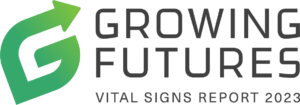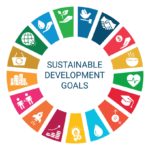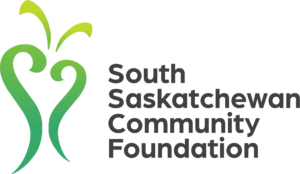Why Vital Signs?
The ‘Growing Futures: Vital Signs Report 2023’ focuses on a South Saskatchewan region recovering from a global pandemic and adapting to an increased cost of living. The report investigates the ways these challenges are impacting our community.
This gives you a snapshot of data about South Saskatchewan and its most pressing needs and challenges. It is a starting point to act and find solutions to the identified challenges.
How Does the Report Work?
SSCF strives to engage and reflect the voices of the South Saskatchewan community. As a result, SSCF looked to its member organizations for their insight on the pressing issues in the community.
The ‘Growing Futures: Vital Signs Report 2023’ identifies key focus areas based on the responses from 43 organizations in South Saskatchewan. Each focus area was carefully researched to provide in-depth, up-to-date information about significant trends and current action. The research process drew on local and national data sources, news articles, industry reports, and academic publications (where applicable) for timely and relevant information. Data to derive trends and statistics were compiled from a variety of sources such as Statistics Canada’s Census of Population 2016 and 2021, Municipal Quality of Life Dashboard, Infrastructure Statistics Hub, as well as Canada Mortgage and Housing Corporation, Government of Saskatchewan, and Food Banks Canada amongst others. All collected data has been analyzed by researcher, Dr. Iryna Khovrenkov, PhD, to create the ‘Growing Futures: Vital Signs Report 2023.’
We then aligned our data with the United Nations’ Sustainable Development Goals (SDGs) to understand how our local data contributes on a global scale. We also looked at our research to ensure it is compatible with the Truth and Reconciliation Commission Calls to Action to better understand how our current data relates to a better future for Indigenous peoples.
Finally, we looked inwards at 2022 donations and granting data through the South Saskatchewan Community Foundation to better grasp our own local impact in relation to our community’s needs.
How Does the Report Work?
SSCF strives to engage and reflect the voices of the South Saskatchewan community. As a result, SSCF looked to its member organizations for their insight on the pressing issues in the community.
The ‘Growing Futures: Vital Signs Report 2023’ identifies key focus areas based on the responses from 43 organizations in South Saskatchewan. Each focus area was carefully researched to provide in-depth, up-to-date information about significant trends and current action. The research process drew on local and national data sources, news articles, industry reports, and academic publications (where applicable) for timely and relevant information. Data to derive trends and statistics were compiled from a variety of sources such as Statistics Canada’s Census of Population 2016 and 2021, Municipal Quality of Life Dashboard, Infrastructure Statistics Hub, as well as Canada Mortgage and Housing Corporation, Government of Saskatchewan, and Food Banks Canada amongst others. All collected data has been analyzed by researcher, Dr. Iryna Khovrenkov, PhD, to create the ‘Growing Futures: Vital Signs Report 2023.’
We then aligned our data with the United Nations’ Sustainable Development Goals (SDGs) to understand how our local data contributes on a global scale. We also looked at our research to ensure it is compatible with the Truth and Reconciliation Commission Calls to Action to better understand how our current data relates to a better future for Indigenous peoples.
Finally, we looked inwards at 2022 donations and granting data through the South Saskatchewan Community Foundation to better grasp our own local impact in relation to our community’s needs.
What the Report Tells Us
The report reveals the following focus areas as the most pressing needs facing our community:
By addressing these focus areas, we can work towards equitable and sustainable support for the well-being of our community.



